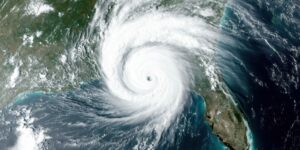It could take Southeast Asia, one of the fastest growing air travel markets, two decades to set up a regulatory body to oversee safety in an industry blighted by disasters in recent years, say national regulators and airline executives.
The need for tougher regulations gained urgency following this month’s report by Indonesia’s National Transportation Safety Committee (NTSC) into the crash of an Indonesia AirAsia A320 passenger jet last year that killed all 162 on board.
Investigators found no single cause for the crash, but listed a combination of factors including a glitch-prone rudder component and pilots’ response when things went wrong.
The 200-page report has been hailed as a potential turning point as pressure grows for stronger regulation to keep pace with rampant growth in aviation in Southeast Asia.
AirAsia founder Tony Fernandes has himself led calls for the Association of Southeast Asian Nations (ASEAN) to forge a common aviation regulator, saying ASEAN institutions should “step forward, for commonality, and for standardization, and for quality.”.
But the 10-nation group is already struggling to implement an Open Skies initiative, or single aviation market, to liberalize air services by the end of 2015.
That will slip due to differences among the member states, and the difficulty in achieving it illustrates the challenges in taking it a step further and creating common aviation regulatory and safety standards, experts say.
Unlike Europe, ASEAN has no legal or executive body to push through liberalization or create regional organizations that oversee safety and air traffic control.
This is mainly because member countries are reluctant to give up their sovereign rights, say industry experts.
“Given the (different) speed of development in each country, I don’t think it will be done anytime soon and may take at least 20 years to take shape,” Chula Sukmanop, director of the Office of Civil Aviation in Thailand, told Reuters.
A lack of consensus among stakeholders is delaying the process, even as more of the region’s 600 million population take to the skies, aided by robust growth of low-cost carriers such as AirAsia and Indonesia’s privately-held Lion Air. Both airlines have placed record orders with the main plane makers.
“Malaysia is open and ready, but some other countries are not ready,” a senior Malaysian official involved in the ASEAN talks told Reuters, declining to be more specific.
Airline executives, too, are divided on how to regulate the industry.
In contrast with Fernandes’ call for a cross-border regulator, Arif Wibowo, chief of the Indonesian National Carriers Association and CEO of flag carrier Garuda, believes aircraft safety should be left to national regulators.
“Each inspector should intensify aircraft maintenance and ensure a high level of scrutiny. Second, regulators in each country should be able to check all airlines in an integrated way. There’s no need to raise it to the ASEAN level,” he told Reuters.
Patchy, but Improving
Air safety standards have improved in much of Southeast Asia, including Indonesia. In 2007, safety standards were so bad that the European Union barred all Indonesian airlines from flying to its member states. That ban was lifted in August 2009 for all the country’s airlines except Lion Air.
But Indonesia’s airline safety record was highlighted again last year with the AirAsia A320 crash.
“In Indonesia, the regulators don’t seem to understand the bigger picture,” said Gerry Soedjatman, a Jakarta-based aviation analyst. “A lot of the policies that came out this year after the crash have been knee-jerk reactions.”
Following this month’s AirAsia crash report, Indonesia’s transport ministry said it ordered additional safety and training checks, including an inspection of all Airbus A320s operating in Indonesia and more frequent training of pilots in so-called “upset recovery” maneuvers.
In Thailand, Prime Minister Prayuth Chan-ocha ordered officials to improve aviationsafety standards after the U.S. Federal Aviation Administration (FAA) downgraded the country’s safety ratings.
Last week, the European Aviation Safety Agency signed up to help Thailand improve its air safety oversight, but did not add any Thai airlines to its blacklist.
European officials nonetheless warned they would continue to scrutinize Thailand’ssafety record, which has been the subject of debate in aviation for years.
At a meeting this month, the Thai government said it will hire 86 international specialists to resolve flaws in the country’s commercial aviation standards raised by the FAA.
ASEAN’s new Open Skies policy includes higher standards of safety and regulations on operating flights. Other measures aim to improve security, air traffic management, civil aviation technology, and air transport regulatory frameworks.
“The message that the Air Asia report sent out was that regulatory oversight in Indonesia and in the region needs to catch up with industry standards,” said Soedjatman.
“It’s going to take a long time to achieve uniformity on everything from quality of training to knowledge, safety and commercial regulations. But they have to start.”
AirAsia has said the whole industry, including manufacturers, has lessons to learn from the report.
(Reporting by Khettiya Jittapong, Manuphattr Dhanananphorn and Simon Webb in BANGKOK, Praveen Menon in KUALA LUMPUR, Kanupriya Kapoor and Cindy Silviana in JAKARTA and Rujun Shen in SINGAPORE, Tim Hepher in PARIS; Writing by Miyoung Kim.)




















 Significant But ‘Manageable’ Insurance Losses Expected From LA Fires: S&P
Significant But ‘Manageable’ Insurance Losses Expected From LA Fires: S&P  Musk’s Massive Tesla Lithium Plant Hunts for Water in Drought-Hit Texas
Musk’s Massive Tesla Lithium Plant Hunts for Water in Drought-Hit Texas  Auto Insurer Files $450M Fraud RICO Case in NY
Auto Insurer Files $450M Fraud RICO Case in NY  NWS Preliminary Estimate for 2024: More Than 5,300 Hail Events, 1,855 Tornadoes
NWS Preliminary Estimate for 2024: More Than 5,300 Hail Events, 1,855 Tornadoes 





